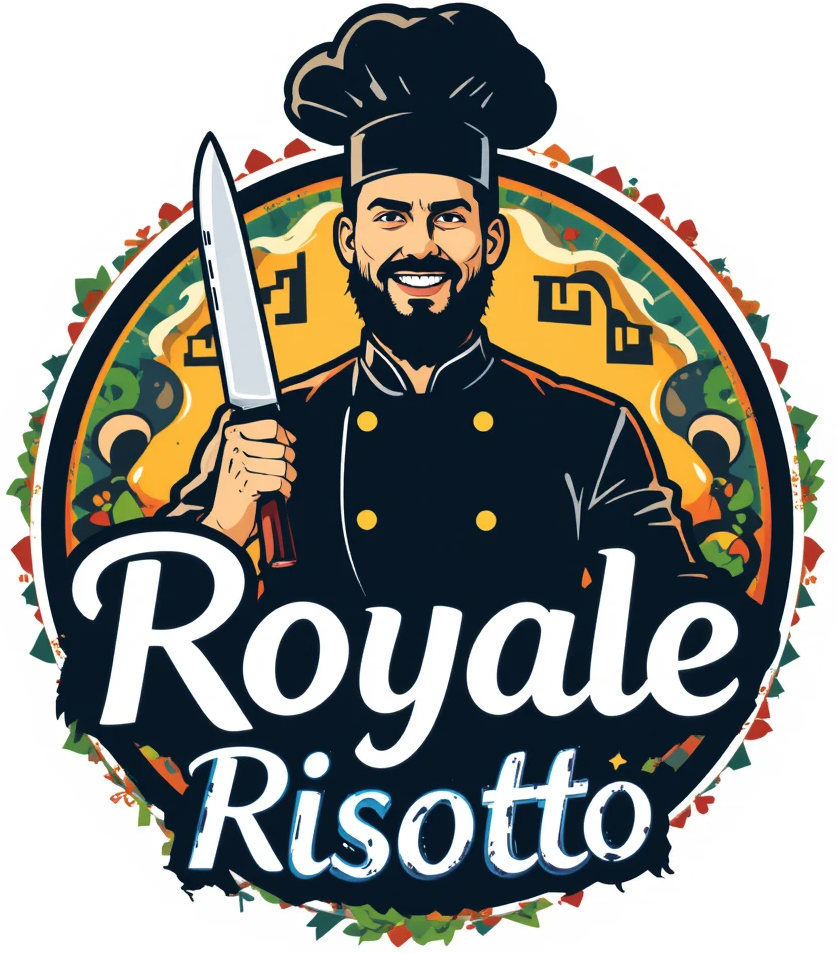Lamb meat is an ancient favorite among protein sources worldwide, famed for its rich flavor and tender texture when coaxed with loving care into the finishing stages of cooking. This Moroccan Lamb Leg Recipe combines shoulder of lamb prepared in the slow-roasting tradition with the explosion of flavors, pomegranate molasses-tart sweetness, warm earthiness from the Moroccan spice blend, and delicate herbaceous notes of the oregano.
The end result is a succulent, shredable masterpiece that is just as good as it is versatile for family occasions and festive dinners, or simply enjoyed during a cozy night in. This is a perfect recipe for anyone looking for a Moroccan Lamb Leg Recipe that impresses.
In this article, we will take you step-by-step through the recipe, its cultural significance, the health advantages it may offer you, and tips on how to customize this dish. Whether you are cooking for eight or just for two, you can count on this dish to afford a grand dining experience with every bite.
For those looking to perfect their Moroccan lamb experience, this recipe also provides insights into the Moroccan lamb roast technique and essential Moroccan lamb leg recipe tips.
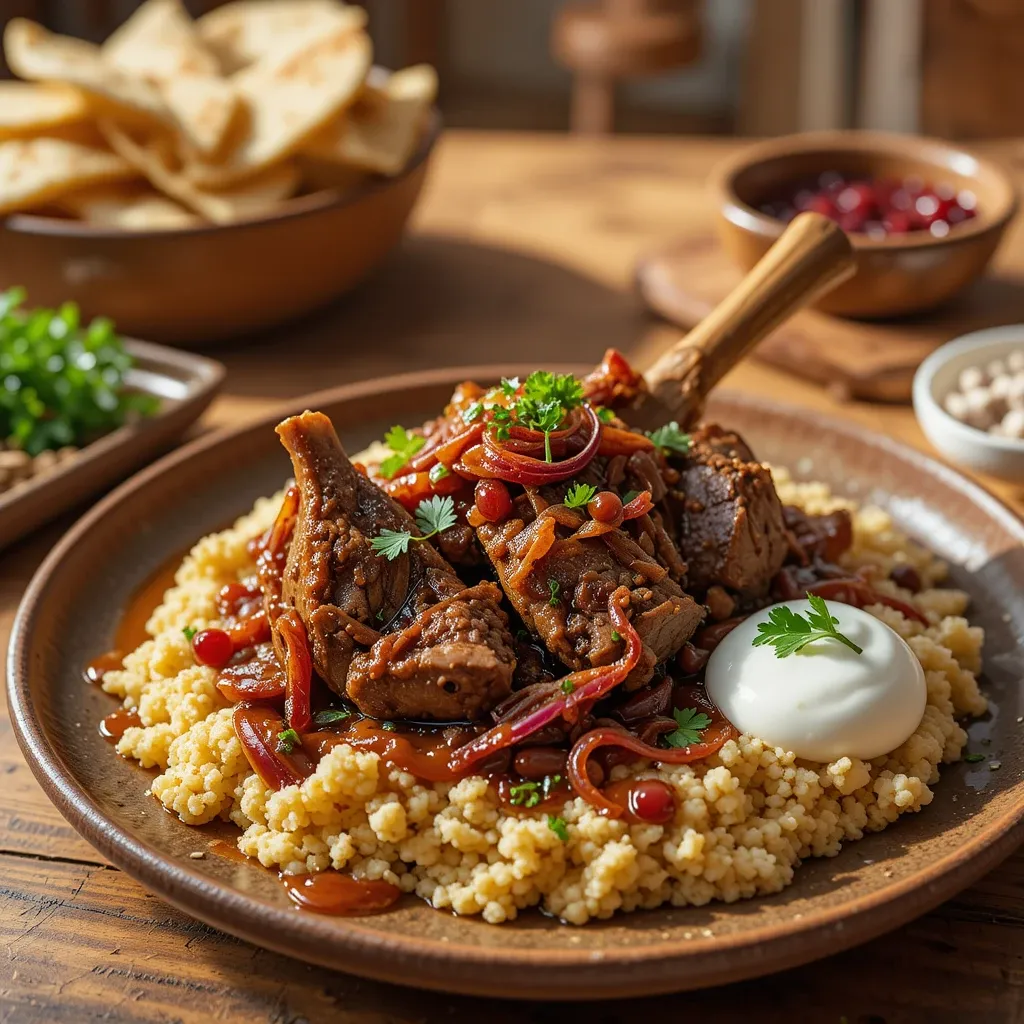
Moroccan Lamb Leg
Equipment
- 1 Roasting tray Large and deep
- 1 Oven Preheated to 180°C (350°F)
- 2 Forks For shredding
- 1 Saucepan To reduce the sauce
- Foil To cover during roast
Ingredients
- 2200 g Lamb Shoulder (boneless or bone-in) Trimmed
- 60 g Garlic (peeled) Fresh cloves
- 4 g Oregano (dried)
- 300 g Onion (red, sliced)
- 100 g Pomegranate Molasses
- 1000 ml Water
- 15 g Salt Adjust to taste
- 30 g Moroccan Spice Blend Cumin, coriander, paprika, cinnamon, ginger
Instructions
- Generously rub pomegranate molasses and Moroccan spice blend into the lamb. Marinate for 20–30 minutes, or overnight in the fridge for deeper flavor.
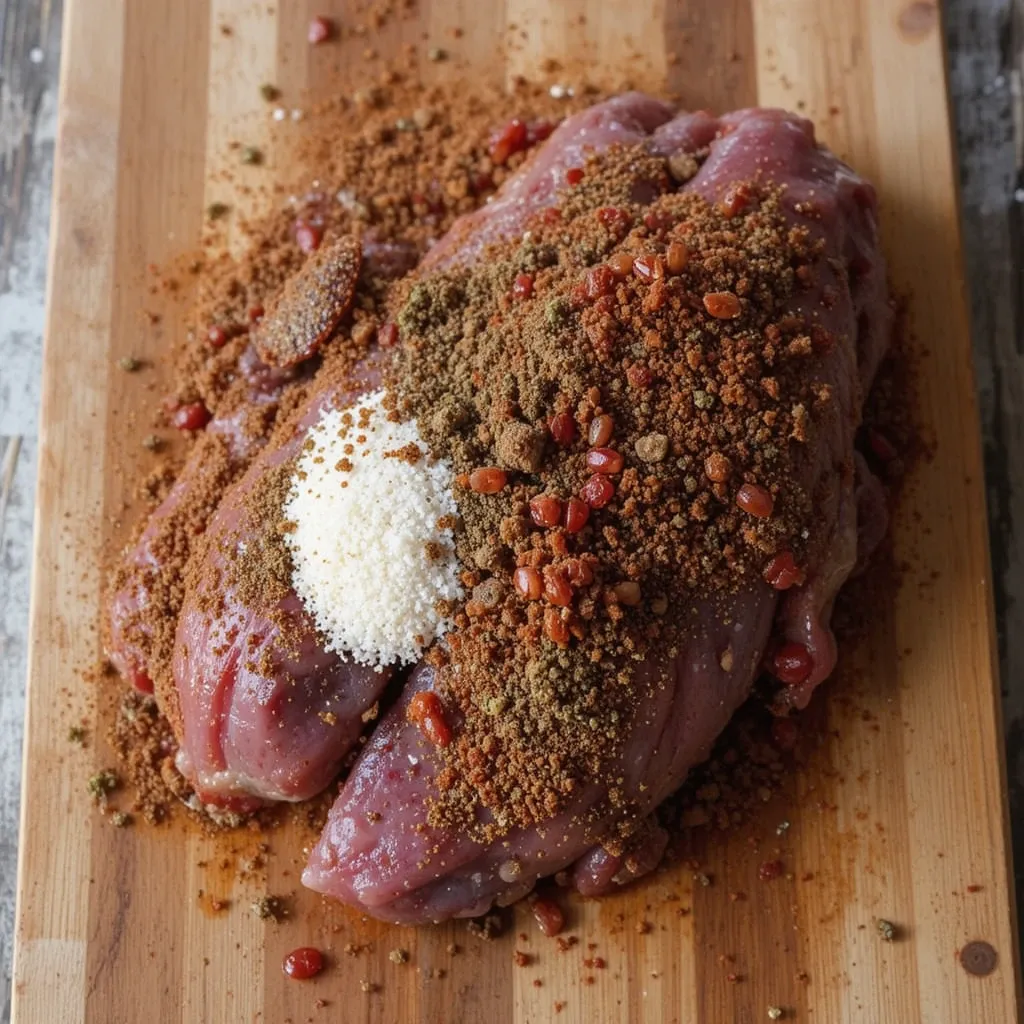
- Place sliced red onion in a thick roasting tray to create a bed. Place the lamb on top, season with oregano and garlic slices, and pour water around (not over) the lamb to preserve seasoning.
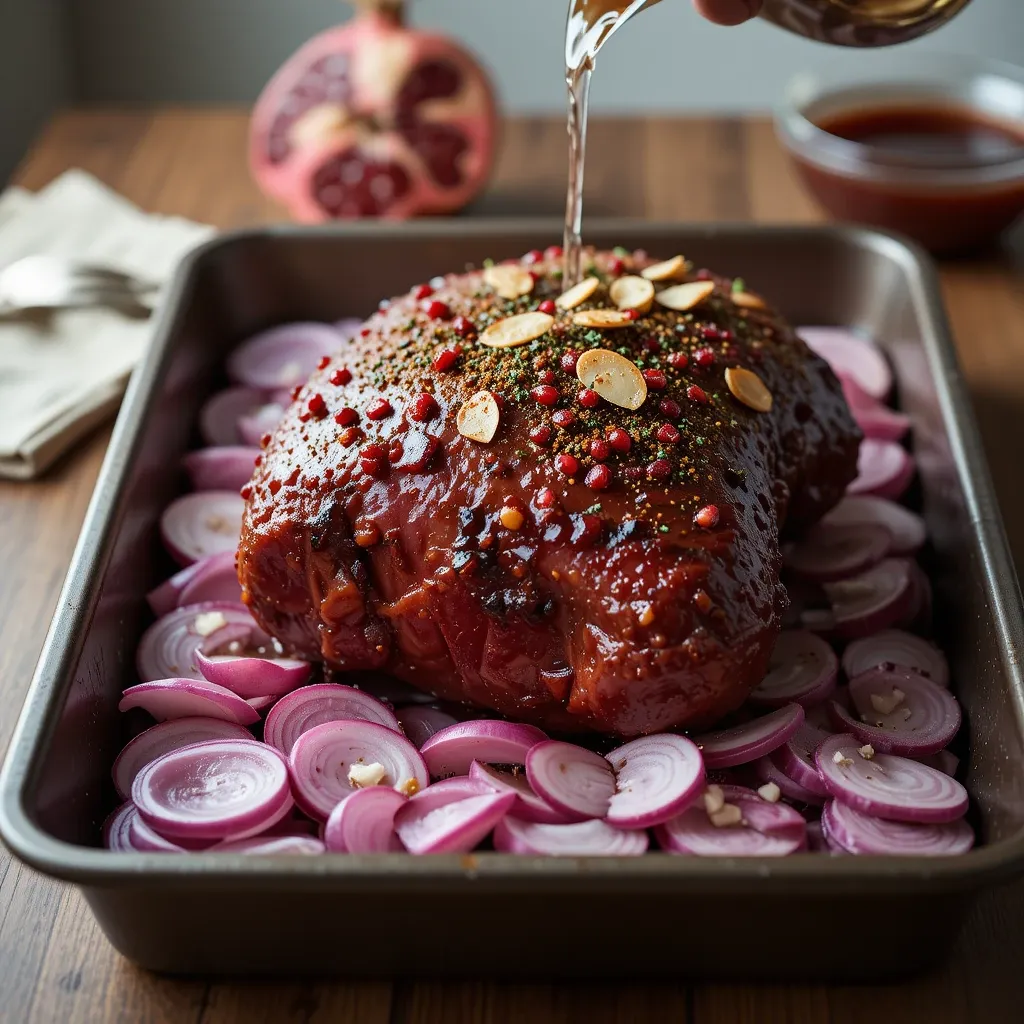
- Preheat oven to 180°C (350°F). Cover the tray with foil and roast for 3 hours, or until the lamb pulls apart easily with a fork.
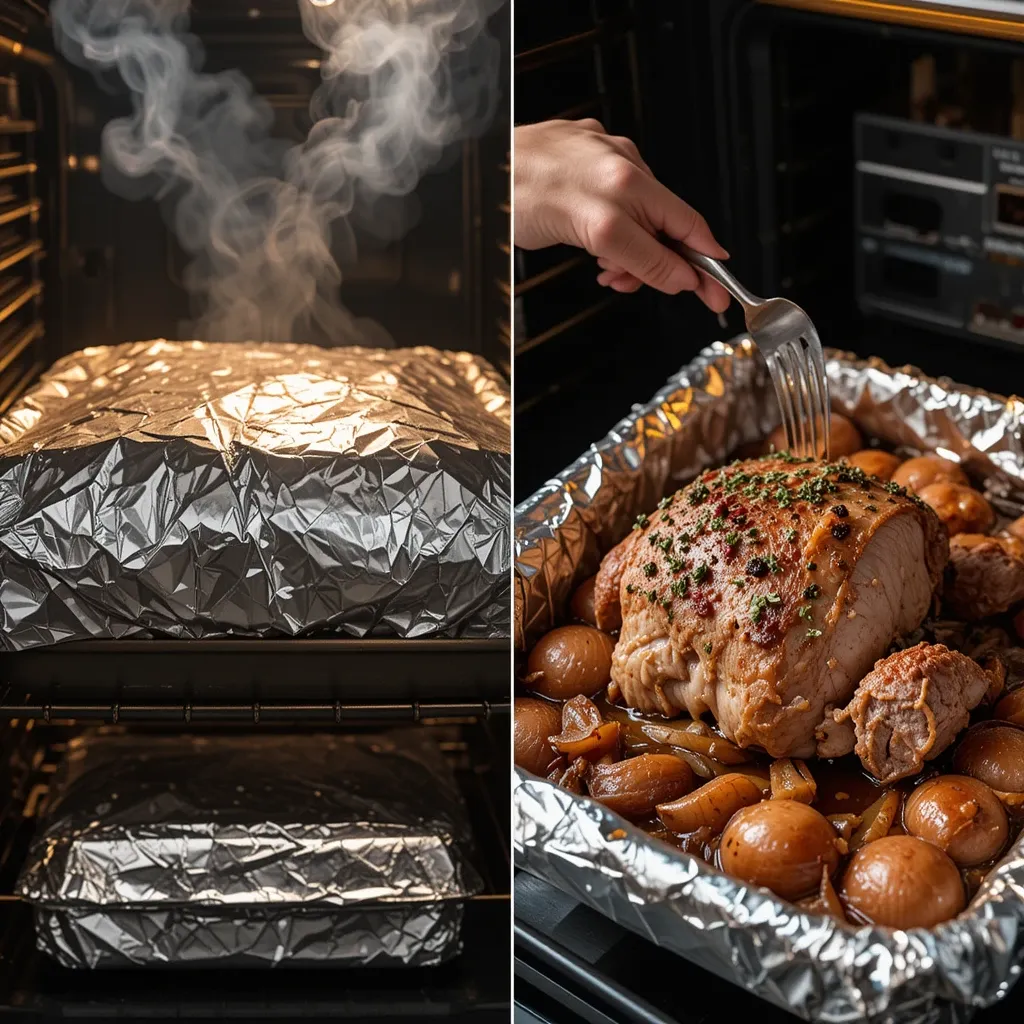
- Check that the lamb’s internal temperature reaches 71°C (160°F) for safety.
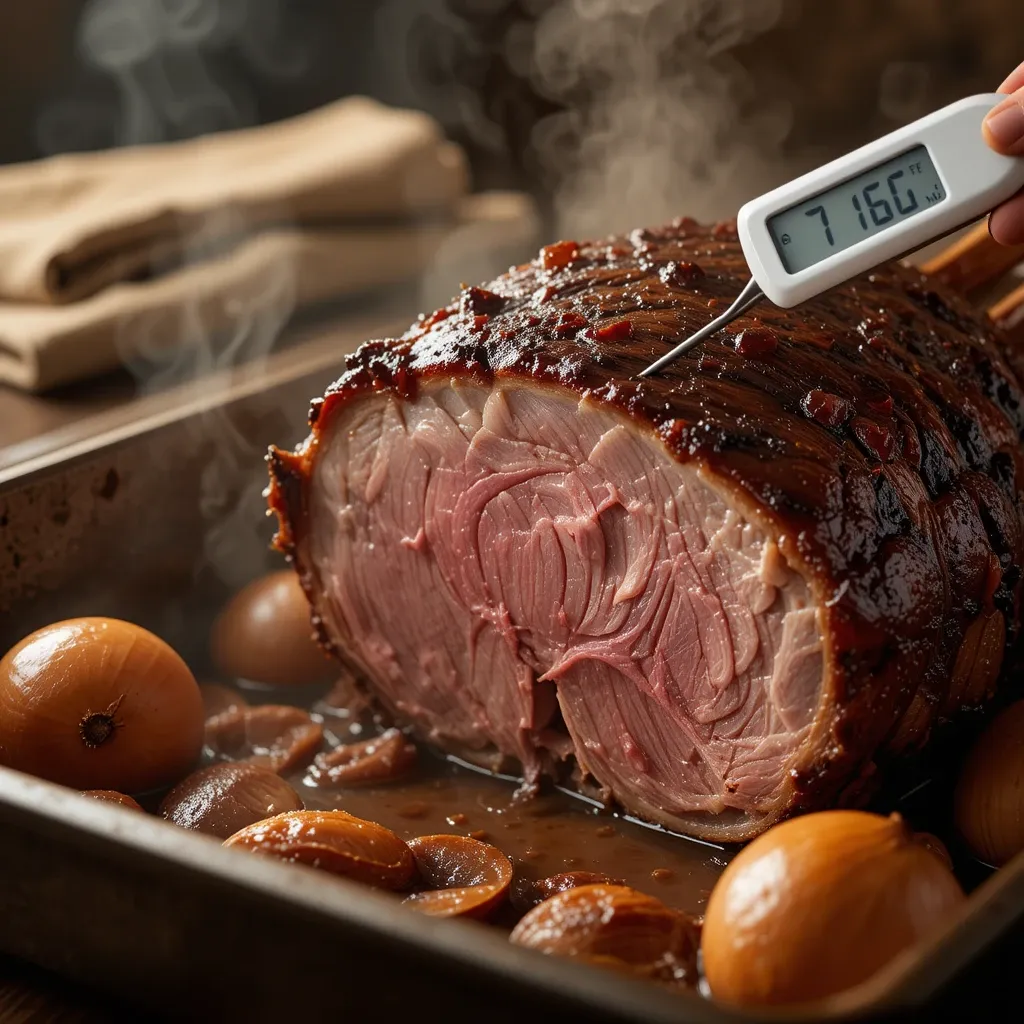
- Remove the lamb from the tray. Reduce the roasting juices on the stovetop to a thick, glossy sauce.
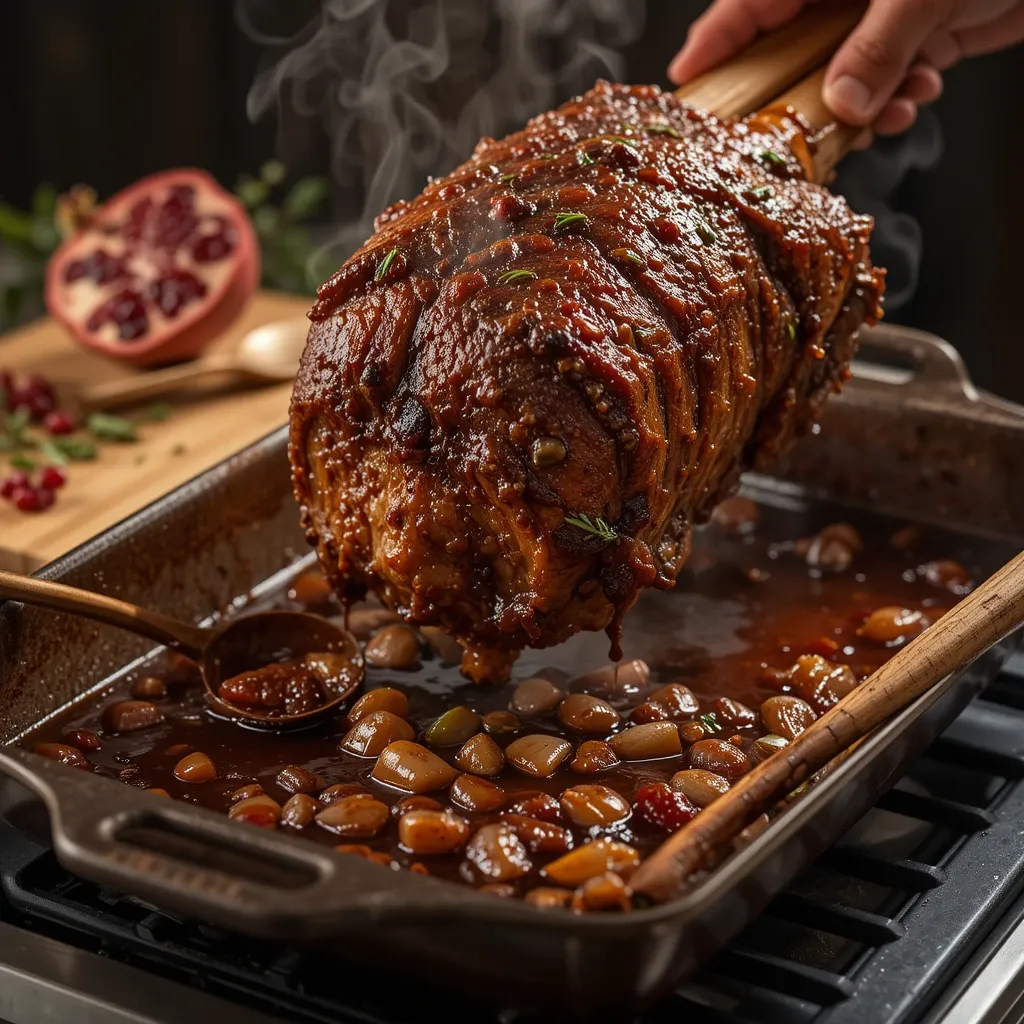
- Shred the lamb using two forks and mix with the reduced sauce for maximum flavor.
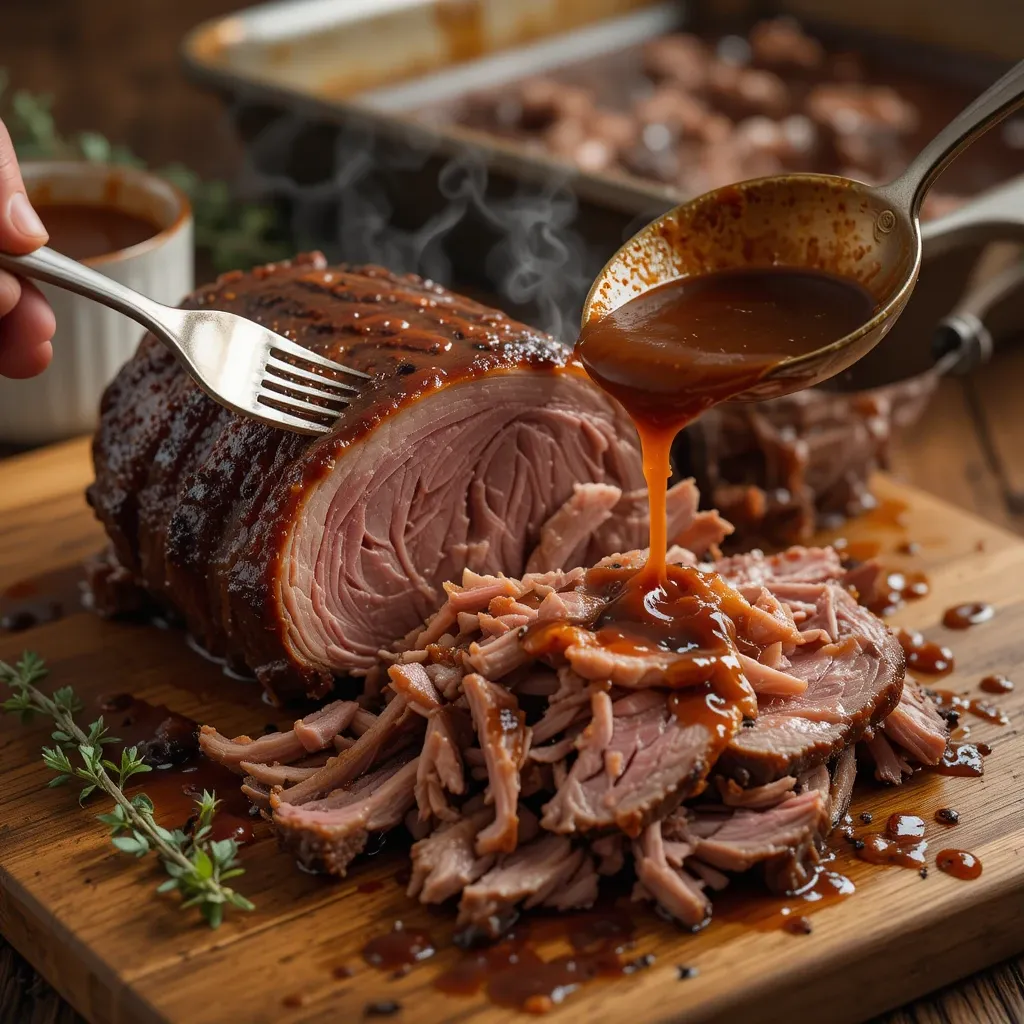
- Serve hot with couscous, pita, or your choice of sides.

Notes
A Journey Through Flavor and Tradition
Cooking with Moroccan spice blends brings warmth, depth, and history to the plate. Often used in sweet, savory, and spicy dishes, this fragrant mix—typically including cumin, coriander, paprika, cinnamon, ginger, and sometimes turmeric or saffron—captures the essence of centuries-old spice routes and cultural fusion.
Pomegranate molasses adds a fruity complexity that beautifully balances the bold, rich flavor of lamb, a cornerstone of Moroccan feasts and family gatherings. The syrup’s tart-sweetness enhances the dish’s layered profile, uniting the sweet and savory with elegant ease.
Historically, Moroccan cooks would slow-cook tough cuts of lamb in clay pots, letting them tenderize gently over open flames. While this modern recipe opts for the oven to save time, it still delivers that melt-in-your-mouth texture reminiscent of traditional tagines.
In Morocco, lamb holds deep cultural meaning. It’s the centerpiece of celebration during Eid al-Adha, symbolizing generosity and shared joy. Whether roasted whole or simmered into a gravy-rich stew, lamb speaks to togetherness.
This Moroccan Lamb Leg Recipe captures that spirit—transforming an age-old tradition into something approachable, flavorful, and ideal for both festive tables and midweek dinners.
Nutritional Powerhouse: Health Benefits
More than just satisfying your taste buds, this dish delivers numerous nutritional benefits:
- Lamb Shoulder: A good protein source (approximately 25g of protein in 100g of lamb) with high amounts of iron, zinc, and vitamin B12 needed for energy, immunity, and brain functions. Grass-fed lamb, wherever possible, would add the benefits of being higher in omega-3s.
- Garlic: A vital herb since ancient medicinal times; allicin acts to support heart health, reduce inflammation, and strengthen immunity.
- Red Onion: Has quercetin as a potent antioxidant; promotes cardiovascular health and inhibits inflammation.
- Oregano: A very small herb with a very big wellness profile, rich with synergistic compounds such as carvacrol and antioxidants.
- Pomegranate Molasses: This is polyphenol-rich, will help aid in digestion, and is considered heart-healthy with lower sugar than most sweet things.
- Moroccan Spices: Goodness knows what other health benefits cumin is doing for digestion, cinnamon is said to balance blood sugar, and paprika also provides vitamin A—all while adding flavor with no calories.
The blend goes beyond tantalizing one’s palate; it qualifies as psychosomatic due to its nutritional properties.
Serving Suggestions and Variations
Lamb Leg is versatile and presents the opportunity for endless variations:
- Classic: Ladle it over fluffy couscous or aromatic basmati rice, with a spoonful of yogurt or tahini sauce.
- Wrap It Up: Stuff in some warm pita or flatbread with cucumber, tomato, and tzatziki, for a delicious hand-held treat.
- Vegan: Serve it with roasted eggplants, bell peppers, or carrots for a contrast and balanced plate.
- Party Time: Load onto slider buns for the perfect two-bite crowd-pleaser.
Variations to Try:
- Spicy: Use harissa or chili flakes to heat things up.
- Sweet: Add dried apricots or raisins to the mix while roasting for a fruity take.
- Low-carb: Cauliflower rice or zucchini noodles can step in for all grains.
- Herby: Mix in fresh mint and Parsley for brightness just before serving.
Helpful Tips for Success
Choosing Your Lamb: The best flavor, nutrition, and resultant tenderness come from lamb raised on grass. While boneless is easier for shredding, bone-in gives a fuller flavor to the dish; just remember to extend the cooking time slightly.
Spice Mix: A store-bought Moroccan mix (like Ras el Hanout) works wonders here, but feel free to whip one together with equal parts cumin, coriander, and paprika, along with a few pinches of cinnamon and ginger.
Storage: Leftover pulled lamb can be stored in the fridge for 3 days or frozen for up to a month. When reheating, do so slowly with a splash of water to help keep the dish moist and luscious.
Double the Sauce: The reduced roasting liquid is liquid gold; make a bit extra for drizzling or dipping.
Pairing Perfection
- Red Wine: Grenache or Syrah, balancing the lamb’s richness with the warmth of the spices.
- Moroccan Mint Tea: The traditional refreshing drink to help digestion.
- Pomegranate Spritz: A mix of pomegranate juice and sparkling water splashed with lime for a zesty alcohol-free alternative.
- Beer: A spiced ale or porter would accentuate everything nice and bold, which is surely part of the dish.
Where to Enjoy
Lunch and dinner are this dish’s prized occasions, well worthy of basking in its slow-cooked glory. Sunday roast, Friday family banquet, or holiday gala time family or friends gather around food.
Final Thoughts
Lamb Leg with Moroccan Spice: An experience, not merely a meal. Hours of slow-roasting will perfume your house with alluring smells, while the soft meat, spiced with flavors, will deliver a flavor bang that lingers on long after the last bite. Worth mastering, this program can go from nourishing dinners to ingenious leftovers.
Whether it’s for a banquet or your own pleasure, this dish balances comfort with sophistication and the old with the new. Now grab your ingredients, turn on the oven, and let this delightful feast carry you off to Morocco’s crowded souks. No passport needed.
